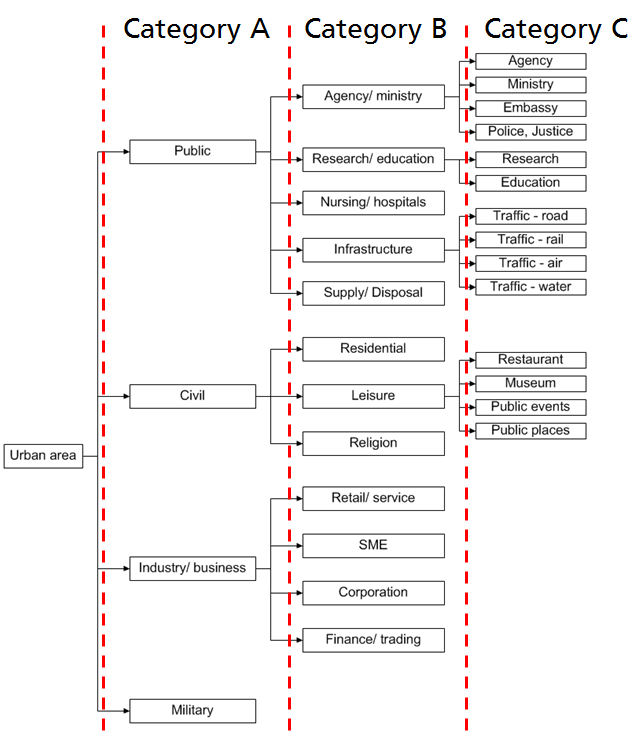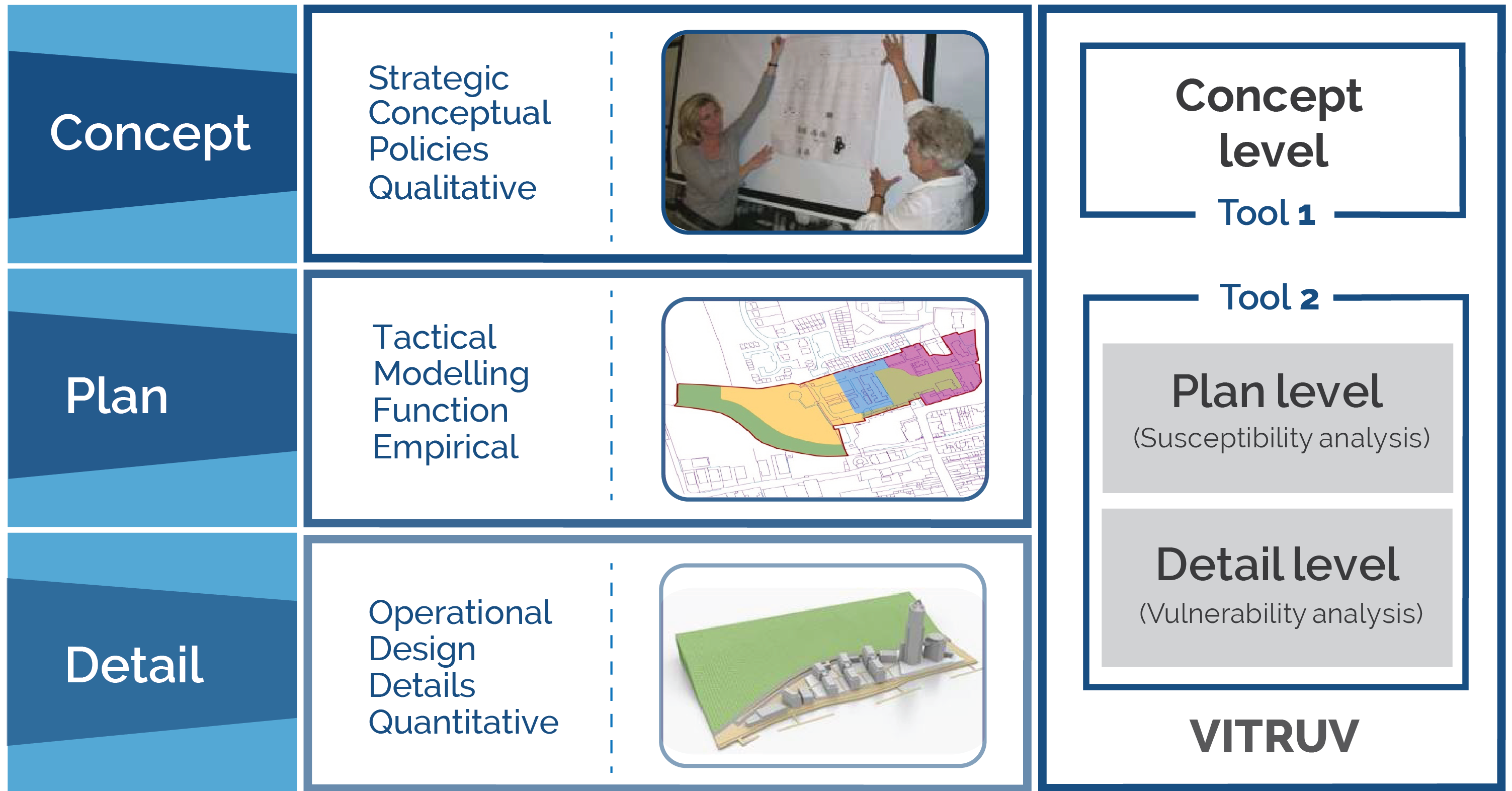Plan level tools
The Plan level tool is the tool provided in the project VITRUV to support the second of three stages distinguished in the process of urban planning.
Three planning stages
Departing from a concrete goal or problem, the first step in finding a fitting solution in the urban space is to investigate possible solution directions, utilising the Concept level tools.
The plan level involves the urban planner formulating, with an additional layer of examination, possible solutions to the problem or challenge at hand. These possible solutions are analysed in the context of relevant characteristics and a screening or feasibility assessment for each may be conducted. Arising from the results of this assessment, possible solutions are discounted, compared and ‘weighed up’, and the most appropriate option available (or combination thereof) is selected (which should, ultimately, accord with the proper planning and sustainable development of the city). The Plan level tools developed within the project VITRUV will support the urban planner in ensuring a holistic approach to his/her duties, by informing from him/her of the security (and connected safety) aspects.
After selecting one (or more) solutions, this is worked out and refined in the detail level, where the Detail level tool from the project VITRUV will assist.
Goal of the plan level tool
The goal of the plan level tool is to provide a susceptibility analysis for urban objects (visualised as simple blocks at this stage) during the planning stage. It facilitates measures for probability of events and the extent of loss associated with an event being realised. It is an easy-to-use, fast-running computer tool consisting of a Window application for Windows and MAC operating systems. The goal of the plan level tool is to focus on crime and terrorism, with natural disasters a potential 'add-on' in future versions.
To provide measures for the probability of events and the extent of losses empirical data for terrorist attacks and crime are provided. This was realized using the Terrorist Event Database (TED)[1] and police recorded crime from the police force area of West Yorkshire Police. This empirical data allows a risk assessment in dependency of the usage of the urban object. For differentiation of the target a classification of the urban area in dependency of the usage was carried out, as depicted in the figure below.

Susceptibility analysis
- Susceptibility, empirical frequency (attacks/year)
- Consequences, injuries and fatalities per attack
- Empirical risk = Susceptibility ∙ Consequences
- Determination of endangered areas
- Basis for consideration of security measures
- Basis for comparison with other risk values (e.g. road accident victims)
Use of empirical data
Calculation of: frequency
Calculation of: extent of losses
Calculation of: empirical risk
Detection of hotspots
Basis for consideration of security measures
Applied Example of Plan Tool
Footnotes and references
- ↑ U. Siebold, J. Ziehm, I. Häring, Terror Event Database and Analysis Software, in Future Security, 4th Security Research Conference, Karlsruhe, Germany, 2009
